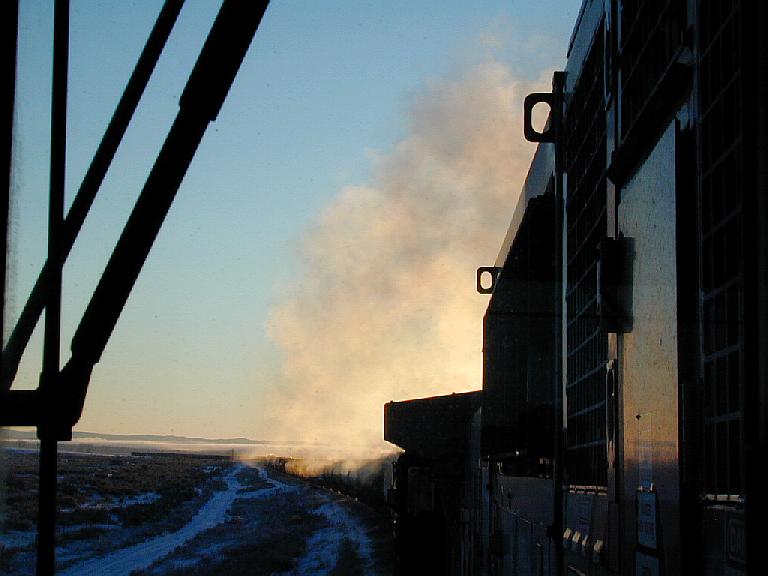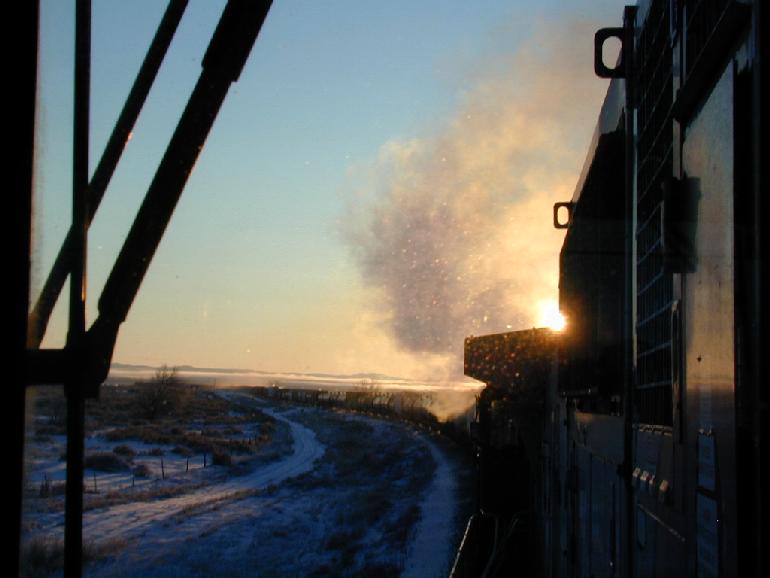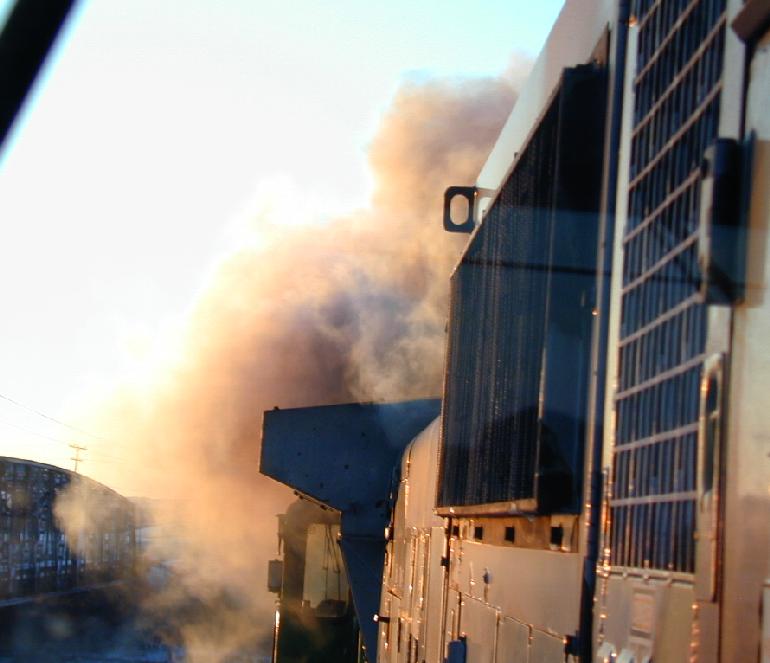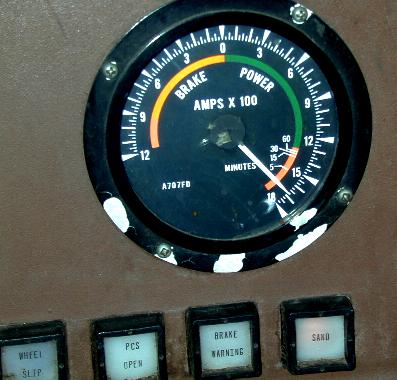
Locomotive Contrails When the temperature gets cold enough diesel locomotives can leave a roiling white plume of steam from the exhausts that looks just like a steam loco's exhaust. To create a really thick long lasting plume requires temperatures below minus 30 and high relative humidity. In these pictures it is getting close to those conditions.We are passing over the hotbox detector at Hardin, Montana at sunrise on February 24, 2003. When the detector sounds off it will report "Ambient temperature, minus two five degrees". All of the detectors from Sheridan, Wyoming to Billings, Montana reported from -22 to -25 degrees. Here at Hardin the "steam" cloud from a C44, an SD40-2, and an SD60 lays back along the train. There is no smoke, just pure white water vapor.


Smoke and Steam My lead unit that day was the ATSF 864. An older C44. Everytime I opened the throttle from 2 to 3 it would spew thick black smoke from the exhaust. After about 15 seconds it would ignite forming a flare 20 feet tall that lit up the surrounding countryside. The flare would burn out after about 6 seconds as the exhaust began to clear but it certainly was impressive while burning.Unfortunately there is no way to get my autofocus digital camera to focus on that in the dark so I had to wait for early daylight. Timing is everything and I missed the flare by about a half a second. The picture below shows the smokey exhaust as it clears out just after the flare up. I'd guess this loco does not meet the EPA's Tier II emissions standards in its current condition.

Darn Hard Pull Sometimes a four axle unit dragging down and dirty will actually surprise me and hold the rail fairly well. On February 9th we are slugging it out up Parkman Hill in the wee hours of the morning on the V-KCMTAC. Power is a B40-8 and an old SD40-2 pulling 4924 tons that is 6767 feet long. The B40 went into the red zone just after tackling the hill and stayed there all the way up. Thirty five minutes of lugging well into the "5 minute zone".It is a good thing the outside temperature was only +2 degrees F or we never would have made it. As it was, just after the locos topped the crest the B40's computer finally cut back the horsepower complaining of hot traction motors. Gee, who-da guessed? If it had done that 60 seconds earlier we would have stalled just a few feet from the crest. We lost a few more mph but what little momentum we had and the SD40-2 managed to roll enough of the train over the top that we did not stall.
With sanders on and dry rail the ATSF B40-8 #572 is running all out showing 1675 amps on its ammeter.

| Return to Tales index | My Home Page | E-Mail me |
Created 02-25-2003
Updated 02-26-2003